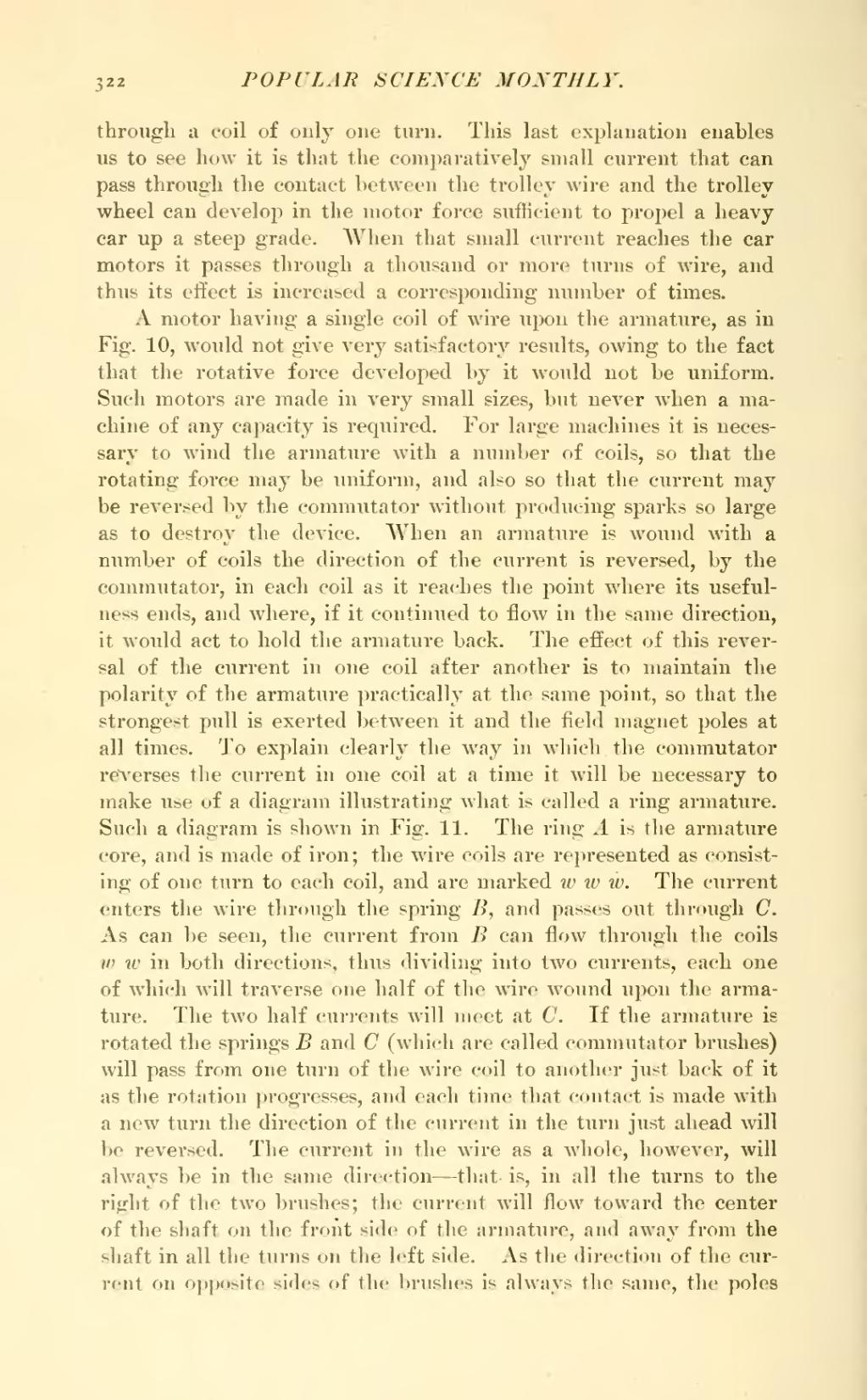through a coil of only one turn. This last explanation enables us to see how it is that the comparatively small current that can pass through the contact between the trolley wire and the trolley wheel can develop in the motor force sufficient to propel a heavy car up a steep grade. When that small current reaches the car motors it passes through a thousand or more turns of wire, and thus its effect is increased a corresponding number of times.
A motor having a single coil of wire upon the armature, as in Fig. 10, would not give very satisfactory results, owing to the fact that the rotative force developed by it would not be uniform. Such motors are made in very small sizes, but never when a machine of any capacity is required. For large machines it is necessary to wind the armature with a number of coils, so that the rotating force may be uniform, and also so that the current may be reversed by the commutator without producing sparks so large as to destroy the device. When an armature is wound with a number of coils the direction of the current is reversed, by the commutator, in each coil as it reaches the point where its usefulness ends, and where, if it continued to flow in the same direction, it would act to hold the armature back. The effect of this reversal of the current in one coil after another is to maintain the polarity of the armature practically at the same point, so that the strongest pull is exerted between it and the field magnet poles at all times. To explain clearly the way in which, the commutator reverses the current in one coil at a time it will be necessary to make use of a diagram illustrating what is called a ring armature. Such a diagram is shown in Fig. 11. The ring A is the armature core, and is made of iron; the wire coils are represented as consisting of one turn to each coil, and are marked w w w. The current enters the wire through the spring B, and passes out through C. As can be seen, the current from B can flow through the coils w w in both directions, thus dividing into two currents, each one of which will traverse one half of the wire wound upon the armature. The two half currents will meet at C. If the armature is rotated the springs B and C (which are called commutator brushes) will pass from one turn of the wire coil to another just back of it as the rotation progresses, and each time that contact is made with a new turn the direction of the current in the turn just ahead will be reversed. The current in the wire as a whole, however, will always be in the same direction—that is, in all the turns to the right of the two brushes; the current will flow toward the center of the shaft on the front side of the armature, and away from the shaft in all the turns on the left side. As the direction of the current on opposite sides of the brushes is always the same, the poles
